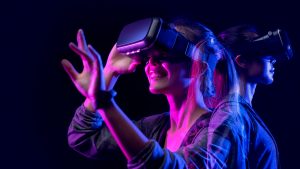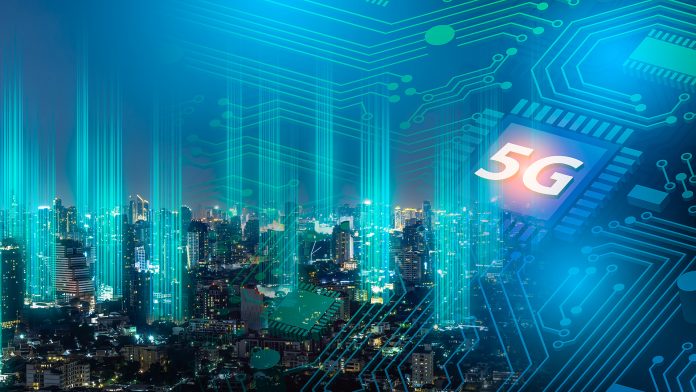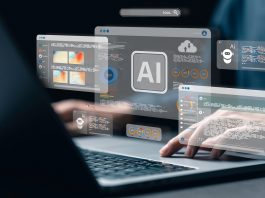Sajan Thomas, Vice President – Product Office at Tecnotree Corporation, discusses how 5G radically transforms digital experiences and its potential to leverage new avenues for digital service providers.
Transforming digital experiences, products, services, operations, business processes, and technologies to enable a digital-first and omni-channel customer experience has become a top priority for CSPs, topping the list of transformation objectives.
5G, however, is taking digital experiences to the next level and opening up a plethora of opportunities for CSPs to deliver a variety of services for customers to digitally interact with. Indeed, 5G has revolutionised the customer experience, allowing digital access to all the services they have dreamed of in the past and opening up new avenues for digital service providers (DSPs) and CSP partnerships.
In this article, we examine the impact – and potential for further transformation – that 5G has on the digital experience.
High-speed connectivity + low latency = seamless and real-time interactions
High-speed connectivity coupled with low latency of 5G ensures that downloads are faster and there is less delay in data processing.
This enables a better streaming experience, smoother real-time interactions, seamless gaming, and immersive collaboration possibilities that deliver personalised experiences. With increased bandwidth, content creators can provide high-quality, immersive content for different types of video streaming like 8K, augmented reality apps, virtual reality games and more, thus transforming digital experiences.
The enhanced mobile broadband of 5G allows more users to connect simultaneously without compromising the speed or quality of service – in sports or concert stadiums or grounds, shopping malls or cinemas, for example.
It also means that high-quality video streaming, Augmented Reality (AR) and Virtual Reality (VR) – all features that supercharge connectivity, especially for today’s smartphones – are all accessible thanks to extremely fast speeds and increased capacity.

This enables digital experiences that have not been possible thus far with other generations of connectivity. It also extends the realm of possibility into new areas, such as virtual stores using AR to see how products look in real time.
5G also enables edge computing, enabling faster data processing and allowing latency sensitive tasks to be performed closer to the user, overall transforming digital experiences.
Data stored in the cloud can be combined with data on the edge to provide real-time information. This can empower experiences such as providing details on where to go for a good shopping experience while also checking on their dietary restrictions based on their preferences using AI and real-time data.
IoT enablement for connected homes, cities, vehicles, and industry automation
Massive Machine Type Communications (MMTC) provide connections to large numbers of devices that intermittently transmit small amounts of traffic, allowing approximately one million connected smart devices and sensors per square kilometre without overloading the network.
5G’s low latency and high capacity provided through this core feature is essential for Internet of Things (IoT) enablement as it allows a vast number of devices to communicate with each other in real-time, creating opportunities for smart homes, smart cities, industrial automation, and connected vehicles due to faster transmission of data.
As the transforming digital experiences accelerate in homes and industries, this will provide an elevated experience to consumers and enterprises alike.
From a customer support perspective, it could improve home troubleshooting and independently detect an issue or alert the user for maintenance before problems occur. Sensors could guide customers through troubleshooting, raising the bar for overall customer experience.
Enhanced reliability for mission-critical applications
Ultra-Reliable Low Latency Communications (URLLC) offers enhanced reliability and availability, making it suitable for mission-critical applications in industries like fleet management, healthcare, or public safety.
5G is transforming digital experiences through its potential to enable digital traffic management, autonomous vehicles, telehealth and teleradiology, remote surgeries and more.
As most of these use cases impact humans, critical communications mustn’t be compromised. As such, using 5G leads to improved safety and efficiency.
How 5G is transforming digital experiences with network slicing
5G allows network slicing, which allows CSPs to partition the network into multiple virtual networks with different attributes. This enables allocation of dedicated network slices for specific services, while ensuring guaranteed quality of service for different applications.
For example, a network slice can be dedicated to a gaming or sports experience to guarantee high capacity and speed while playing games or viewing matches. This means the customer can control how they subscribe to products and bundles, permitting unique configurations for a differentiated digital experience and creating the option to pay more for the desired experience.

Bringing together CSPs and digital partners
Pairing CSPs and digital partners has taken another leap with the advent of 5G. CSPs can now establish multiple digital services partnerships, specifically in gaming, education, entertainment, tourism, healthcare, or sports, to deliver engaging and interactive experiences to customers under a one-stop shop.
The huge opportunity for users to subscribe to these different types of digital experiences from one marketplace and to have microapps enabled to experience all the services from the same market is huge.
Collaboration with OTT providers, content creators and other industry players delivers a range of comprehensive digital service experiences to offer bundled digital services with connectivity.
Transforming digital experiences with 5G enables new uses cases and business models
5G transforms digital experiences by providing faster speeds, lower latency, massive connectivity, and enhanced reliability. It also opens new possibilities for IoT applications, immersive experiences, real-time communications, and personalised services across various industries.
This increased reliability, performance, and efficiency will be a huge challenge for businesses having to meet higher customer expectations. As 5G continues to roll out globally, we can expect significant advancements in digital experiences and innovative use cases that leverage the power of this technology.
Overall, 5G doesn’t only bring technical improvements; it enables industries to develop new use cases and business models as CSPs, DSPs, and customers alike further adopt it.









